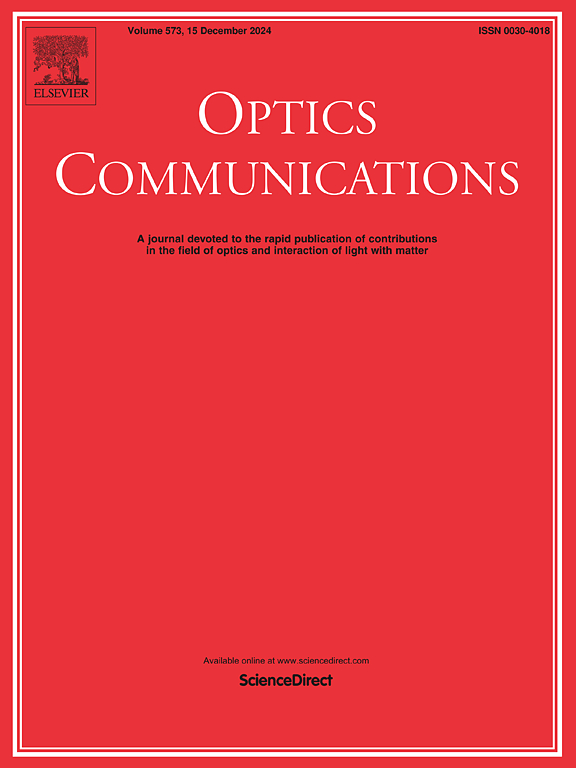通过合并连续体中的束缚态实现高效率的三次谐波产生
IF 2.5
3区 物理与天体物理
Q2 OPTICS
引用次数: 0
摘要
超紧凑型三次谐波产生(THG)器件对于集成光子学、非线性传感、超快光调制等领域至关重要。然而,基于硅或铌酸锂的传统系统在谐振模式下遭受严重的辐射损失,从根本上限制了THG效率低于10−6,即使在千兆瓦级泵浦强度下也是如此。最近,基于连续介质中孤立束缚态(BIC)的系统表明,THG效率可以提高到10−3,但仍然处于相对较低的水平。在这里,我们提出了一种通过在砷化镓(GaAs)光子晶体板中合并bic来显著提高三次谐波产生(THG)效率的策略。与之前利用铌酸锂或硅基平台进行二次谐波产生(SHG)或THG的研究相比,我们基于砷化镓的设计利用了其高三阶磁化率。数值模拟表明,在超低泵浦强度(2kW/cm2)下,THG效率为3.2×10−2。此外,我们还分析了对称保护和意外bic合并过程中的拓扑电荷动力学,揭示了辐射抑制背后的物理机制。我们的工作不仅推进了合并BIC在三阶非线性过程中的应用,而且为有效的变频应用提供了定制BIC拓扑的见解。本文章由计算机程序翻译,如有差异,请以英文原文为准。
High-efficiency third-harmonic generation enabled by merging bound states in the continuum
Ultracompact third-harmonic generation (THG) devices are critical for integrated photonics, nonlinear sensing, ultrafast optical modulation and more. However, conventional systems based on silicon or lithium niobate suffer from severe radiative losses in resonant modes, fundamentally limiting THG efficiency to below even under gigawatt-level pump intensities. Recently, the system based on isolated bound states in the continuum (BIC) have shown that THG efficiency can be enhanced to , but it remains at a relatively low level. Here, we propose a strategy to significantly enhance third-harmonic generation (THG) efficiency by merging BICs in gallium arsenide (GaAs) photonic crystal slabs. In contrast to previous studies utilizing lithium niobate or silicon-based platforms for second-harmonic generation (SHG) or THG, our GaAs-based design leverages its high third-order susceptibility. Numerical simulations demonstrate a THG efficiency of at an ultralow pump intensity (). Furthermore, we analyze the topological charge dynamics during the merging process between symmetry-protected and accidental BICs, revealing the physical mechanism behind the radiation suppression. Our work not only advances the application of merged BICs in third-order nonlinear processes, but also provides insights into tailoring BIC topology for efficient frequency conversion applications.
求助全文
通过发布文献求助,成功后即可免费获取论文全文。
去求助
来源期刊

Optics Communications
物理-光学
CiteScore
5.10
自引率
8.30%
发文量
681
审稿时长
38 days
期刊介绍:
Optics Communications invites original and timely contributions containing new results in various fields of optics and photonics. The journal considers theoretical and experimental research in areas ranging from the fundamental properties of light to technological applications. Topics covered include classical and quantum optics, optical physics and light-matter interactions, lasers, imaging, guided-wave optics and optical information processing. Manuscripts should offer clear evidence of novelty and significance. Papers concentrating on mathematical and computational issues, with limited connection to optics, are not suitable for publication in the Journal. Similarly, small technical advances, or papers concerned only with engineering applications or issues of materials science fall outside the journal scope.
 求助内容:
求助内容: 应助结果提醒方式:
应助结果提醒方式:


